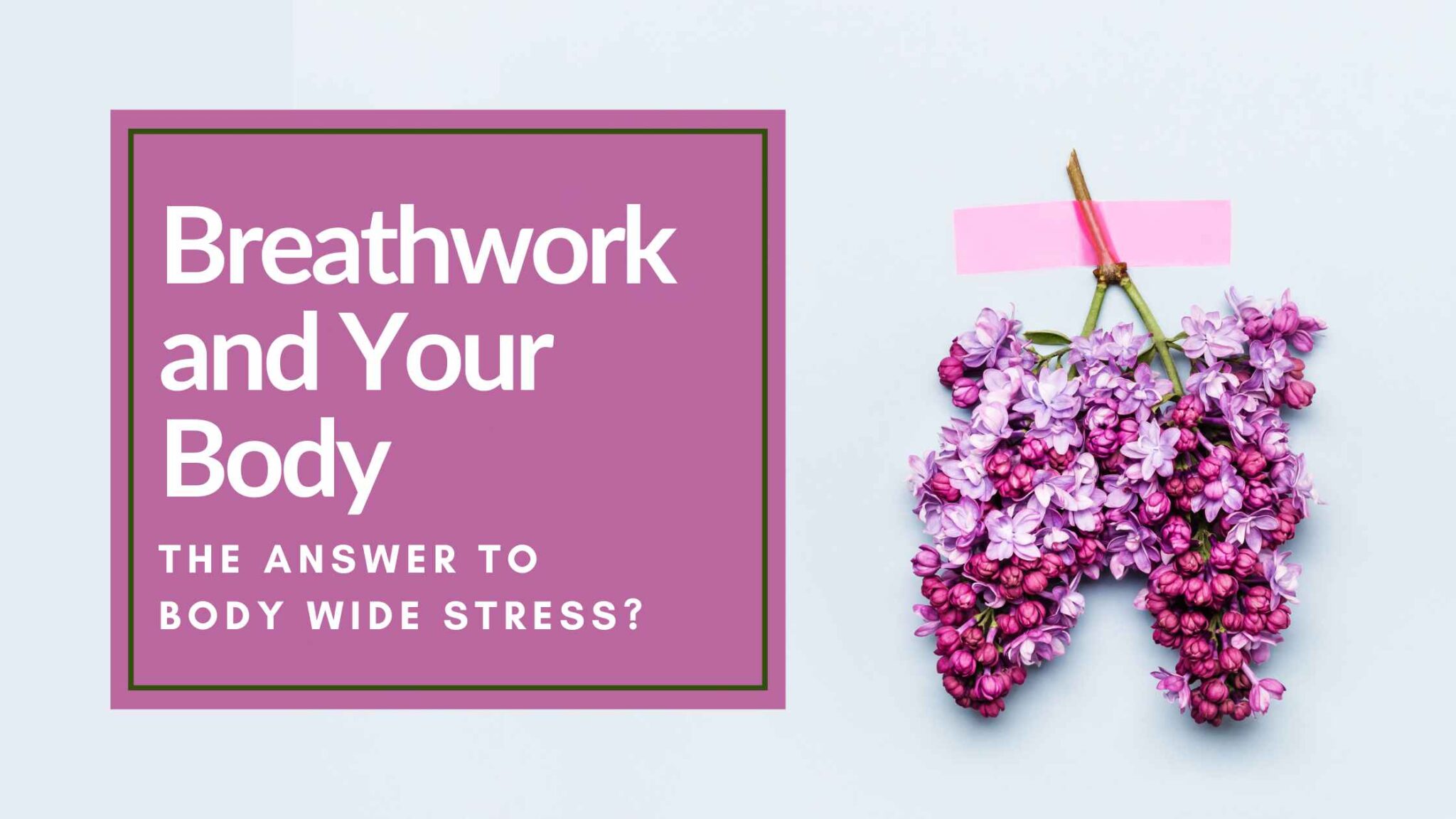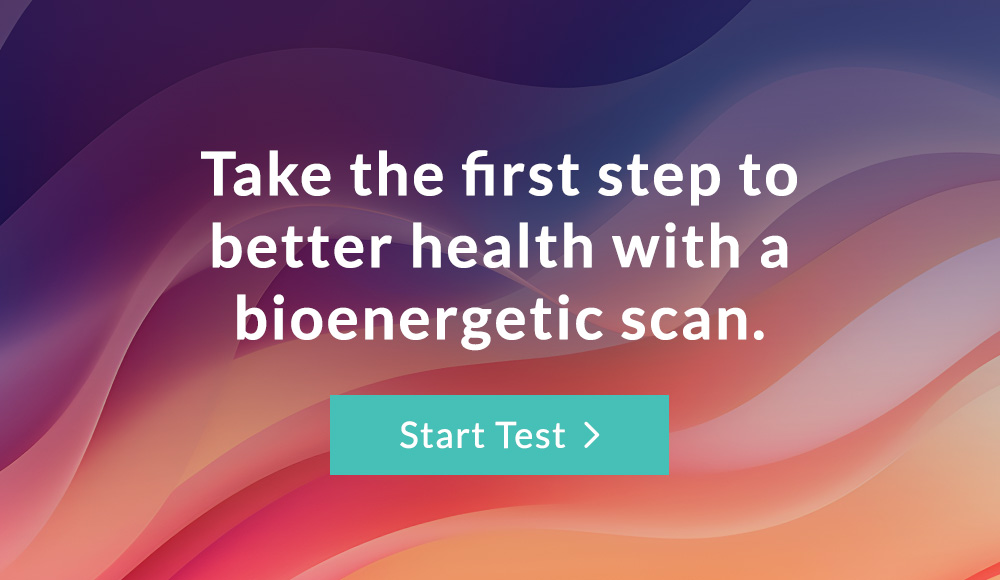
Does Breathing for Stress Reduction Work for Easing Body-Wide Stress?
Intentional breathing is a powerful action practiced for centuries in different forms and cultures worldwide to create balanced health. Practicing deep, conscious breathing exercises have been known to help improve physical, mental, and emotional well-being. We now have a formal term for intentional, guided breathing: breathwork.
You can use breathwork for stress relief and to lessen anxiety. Breathwork can also increase energy levels, improve sleep quality, and address emotional wounds.
We’ve seen breathing support the pain response, digestion, emotions, and the lymph system.
In this article, we’ll explore the life-changing benefits of breathwork and how you can incorporate it into your daily life.
Want to experience breathing for stress reduction yourself? Testing with us gives you exclusive access to our remedies and complimentary email support for your systems. We’ll be sharing different types of breathing exercises for stress reduction to help you find relief.
Practitioners! We have Done For You Client Handouts to support your holistic health practice. Enroll in Bioenergetic Training with us and get these for free!
What is Breathwork, and How Does it Work?
Breathwork is guided, deep breathing that involves conscious, controlled techniques to improve physical, mental, and emotional well-being. It is based on the principle that the breath is the source of life and that by changing our breathing patterns, we can change our thoughts, emotions, and physical sensations. This practice involves various techniques, including deep breathing for stress reduction, circular breathing, and breath retention.
Though some of the greatest benefits of breathwork come from an hour-long session, short breathwork for stress relief is also effective. Breathing is a natural experience, yet many people hold their breath nearly 80% of the time. Our bodies were designed to take deep breaths. As stress mounts in life, our breathing gets more shallow, which can increase anxiety. As a result, we are robbing our bodies of that much-needed oxygen and increasing stress.
The Benefits of Breathwork
Breathwork has numerous benefits for the mind, body, and soul. One of the most significant benefits of breathing is stress reduction. When we’re stressed, our breathing becomes shallow and rapid, which can lead to physical tension and emotional distress. Practicing intentional, slower breathing can calm our nervous system, reduce stress levels, and promote relaxation.
Breathwork can also improve physical wellness by increasing oxygen levels, improving circulation, and boosting the Immune System. It may help reduce chronic pain, lower blood pressure, and improve sleep quality. Additionally, breathwork can help release emotional blockages and trauma, allowing us to heal and move forward.
If you regularly attend yoga classes, you are probably familiar with “Pranayama” breathing, a form of deep inhalation and exhalation. Prana means “vital life force,” and yama means “to gain control.” This type of breathwork for stress relief helps you direct your own life force – your vital energy – by unblocking restricted energy channels.
The Science Behind Breathing for Stress Reduction
The science behind breathwork for stress relief is based on the principle that breath is directly connected to the autonomic nervous system, which regulates our body’s involuntary functions. When we breathe deeply and consciously, we activate the parasympathetic nervous system, which promotes relaxation and reduces stress levels. If we breathe with intention, oxygen levels in the body increase, which can improve physical and mental performance.
Deep and slow breathing techniques (DSB), which are part of many relaxation practices, have been studied in relation to pain and pain thresholds. It seems that the type of breathing that promotes relaxation is responsible for pain perception (1).
Research has shown that breathwork can also positively impact our brain chemistry. When we breathe deeply, we stimulate the release of endorphins, which are natural painkillers and mood enhancers. Exercise, which causes an increase in breathing, also builds endorphins. Exercise can also reduce fatigue, which is related to the release of these endorphins (2).
Breathing for stress reduction can also increase the production of serotonin, a neurotransmitter that regulates mood, appetite, and sleep. The amino acid tryptophan makes serotonin. Serotonin imbalances, which can be shown in a holistic balance scan or full bioenergetic body scan report, can have detrimental effects on mood. You can boost serotonin through food, movement, and breathing.
Different Types of Breathwork for Stress Relief
There are many different types of breathwork techniques, each with unique benefits and purposes. Some of the most common types of breathing for stress reduction include:
- Pranayama: A yogic breathing technique that involves deep, controlled breathing exercises.
- Holotropic breathwork: A form of breathwork that involves rapid, rhythmic breathing to induce altered states of consciousness.
- Rebirthing breathwork: A technique that involves circular breathing to release emotional blockages and trauma.
- Transformational breathwork: A technique that involves conscious, connected breathing to promote physical, mental, and emotional well-being.
- Mindfulness breathwork: Meditation often includes intentional breathwork to calm the body and mind.
Breathwork and breathing for stress reduction are considered contemplative practices (1). These types of practices work on toning the Vagus nerve. The Vagus nerve is part of the PNS or the parasympathetic nervous system. This system is also called the “rest and digest” system. As the name implies, this system is essential to your digestion. When the body is stressed, digestion can be impacted. Thus, practicing breathwork can help with digestion, which can help your body function better overall.
How to Practice Breathwork
To practice breathwork, find a quiet and comfortable place to sit or lie comfortably. Begin by taking a few deep breaths, inhaling through your nose, and exhaling through your mouth. Then, start to focus on your breath, paying attention to the sensation of the air moving in and out of your body.
You can then begin to practice various breathwork techniques, such as deep breathing, box breathing, 4-7-8 breathing, or breath retention. It is important to start slowly and gradually increase the intensity of your breathing as you become more comfortable with the technique to get the most benefits of breathing for stress reduction.
Box breathing is a great way for beginners to get started and feel grounded in simple breathing techniques. This technique is also known as 4-4-4-4 breathing. You can try this type of breathwork for stress relief today.
- Find a comfortable seated position.
- Breathe slowly out of your mouth.
- Breathe in through your nose for a count of four. Do all of these breaths slowly.
- Hold your breath for a count of four.
- Let your breath go through your mouth for a third count of four.
- Hold your breath again for a count of four.
- Repeat for as long as you want.
Breathwork for Stress and Anxiety
Breathwork can be an effective tool for managing stress and anxiety. As we have discussed, deep breathing exercises can calm our nervous system, reduce stress levels, promote relaxation, and work towards creating balanced health. Some studies show breathing deeper can even lower blood pressure and heart rate. This can be particularly effective before bedtime. Another effective way of breathing for stress reduction is the 4-7-8 breathing technique. This involves inhaling for four seconds, holding your breath for seven seconds, and exhaling slowly for eight seconds.
Breathwork for Stress Relief and Physical Wellness
Breathing for stress reduction can also have numerous physical benefits. Increasing oxygen levels in the body can improve circulation, boost the immune system, and reduce chronic pain. The Wim Hof Method, which requires rapid, rhythmic breathing alternated with breath retention, has been shown to increase oxygen levels in the body.
The movement of breath can also impact lymphatic flow. Diaphragmatic breathing moves lymph and blood toward the heart, improving the flow of both fluids. In one study, the participants were taught guided breathing, with intentional hand placement on the abdomen and their heart. By focusing on their hands, they could work on belly breathing and create a beneficial pressure variation between the thoracic spine (upper middle back) and the abdomen (3).
Breathwork for Emotional Wellness
Breathwork can also be a powerful tool for emotional support. By breathing for stress reduction, you can release emotional blockages and trauma, helping you to move forward from emotional wounds. One effective technique for emotional healing is rebirthing breathwork, which involves circular breathing to release emotional blockages and trauma.
When addressing emotional trauma, it is best to work with a trained professional.
Want to uncover trapped emotions but don’t know where to start? Consider our emotional wellness test, which will reveal four emotional blocks that may be increasing stress in your body.
Bring Breathwork into Your Daily Life
Incorporating breathwork into your daily life can be a simple and effective way to improve your overall well-being. Get started by setting aside a few minutes each day to practice deep, conscious breathing for stress reduction.
Are you a Practitioner? Breathing is an integral part of client support! Our Bioenergetic Certification includes client support sheets and other tools for practitioner support. Get your clients feeling their best!
Simply pausing, noticing how you feel, and taking a few deep breaths is one way to bring simple breathwork into your life.
Breathwork will help you reduce stress, incorporate more mindfulness in your day, and even change your stress patterns, which is critical for supporting your valuable hormones.
By practicing deep, conscious breathing exercises, you can improve physical wellness, address emotional wounds, and work towards creating balanced health. There are many different types of breathwork techniques, yet all have the same lasting benefits.
You can start breathing for stress reduction today by simply taking 3 deep breaths right now.
Want to understand the stress in your body?
Sources
- https://pubmed.ncbi.nlm.nih.gov/16624497/
- https://pubmed.ncbi.nlm.nih.gov/6091217/
- https://www.ncbi.nlm.nih.gov/pmc/articles/PMC6789820/
